Sennheiser for ‘Jesus Christ Superstar’
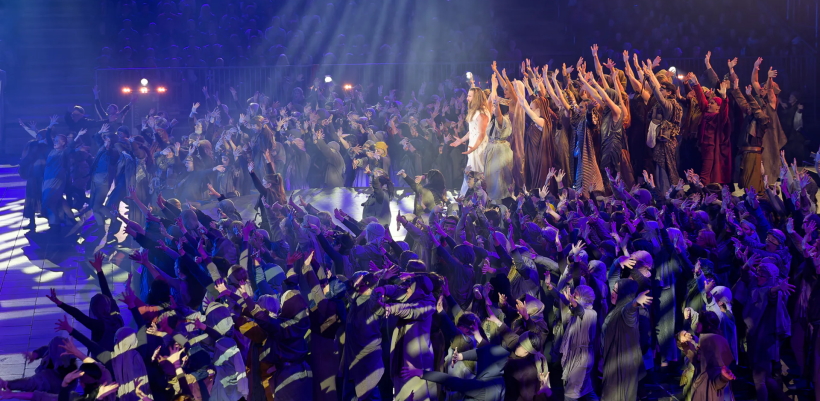
In September and October 2025, the Komische Oper Berlin created a real sensation with performances of almost biblical proportions. On 14 evenings, the rock oratorio ‘Jesus Christ Superstar’ was staged in the monumental setting of Hangar 4 at the former Tempelhof airport – an extraordinary venue where the explosive power of the work was showcased in a spectacular production. And the result was highly impressive. Hundreds of performers filled the vast stage, accompanied by an orchestra, a rock band, and a large choir. The stage design in the aircraft hangar – itself an iconic listed building – created an exciting setting where the action flowed back and forth between intoxicating collective ecstasy and quiet contemplation.
This multifaceted rock opera that effectively combines music, theatre and dance set new standards not only visually but also in terms of electroacoustics – and it did so in a location that is anything but ideal for the use of PA equipment. A key role in ensuring the best sound quality was played by the brand-new Sennheiser Spectera wideband ecosystem. Two Spectera Base Stations, 32 SEK bodypacks and eight DAD antennas delivered a magnificent performance.
“There are two main reasons why Sennheiser Spectera systems were the preferred choice for ‘Jesus Christ Superstar’,“ explained tonmeister Holger Schwark, who was responsible for the sound design of the rock oratorio. “First of all, Spectera is remarkably unaffected by interference that usually occurs in such demanding environments with lots of RF reflection. Secondly, the performers enjoy the high level of wearing comfort that it offers, as they only need a single beltpack instead of the usual two devices – the special feature of the SEK bodypacks is that they function simultaneously as a bodypack transmitter and an in-ear receiver. That benefit is much appreciated, of course, even though ‘Jesus Christ Superstar‘ does not have all that many costume changes.”
Schwark pointed to the hangar’s huge metal doors, the metal ceiling and the multitude of steel girders. “Many of the challenges that you have to overcome with conventional wireless systems are simply not a problem with Spectera because of its innovative transmission principle. Even the RF reflections, which are usually extremely annoying, are beneficial! In a direct comparison to the settings that had to be made in previous years, operating the wireless system for ‘Jesus Christ Superstar’ in Hangar 4 was remarkably stress-free.”
A similar opinion was expressed by Simon Böttler, the permanent tonmeister at the Komische Oper Berlin, who alternated with his colleague Andrea Jetter in operating the FOH console during the shows. “I didn’t have the opportunity before ‘Jesus Christ Superstar’ to gain any practical experience with the Spectera system. But I can now confirm that this relatively new system works absolutely perfectly for us. I haven’t noticed any drop-outs or interference of any kind at the FOH console. My colleagues from the wireless world also told me just how pleasant it was for them that they only have to equip the performers with one bodypack instead of two before the start of the show.”
Schwark emphasised that many performers really appreciate it when they see their own name appear on the continuously visible e-ink displays of the SEK bodypacks. “It may seem like a small detail, but it’s one that gives pleasure to a lot of performers,” said the tonmeister, who has completed many successful classical music projects of all shapes and sizes and who also regularly works for rock and pop acts such as the Pet Shop Boys.

During the performances of ‘Jesus Christ Superstar’, 27 of a total of 32 Sennheiser Spectera SEK bodypacks were used in their dual function as a transmitter and receiver. The nine main actors as well as a further 18 ensemble members benefited from this bidirectional operation. The saxophonist of the live rock band also used an SEK bodypack as a transmitter enabling him to move around the stage during the show. His instrument was fitted with a Neumann Miniature Clip Mic MCM system with a KK 14 cardioid capsule. Two additional SEK bodypacks served as pure in-ear solutions at the monitoring console. During the rehearsals, the assistant directors also used two SEK bodypacks, which were then available as back-ups for the shows themselves.
Böttler pointed out that not only the saxophone but also the entire string section of the orchestra was miked with Neumann MCM systems. Schwark confirmed that the Neumann solutions provide very good sound characteristics and user-friendly handling. Neumann KM 184 small diaphragm condenser microphones were used as overheads and for miking various percussion instruments.
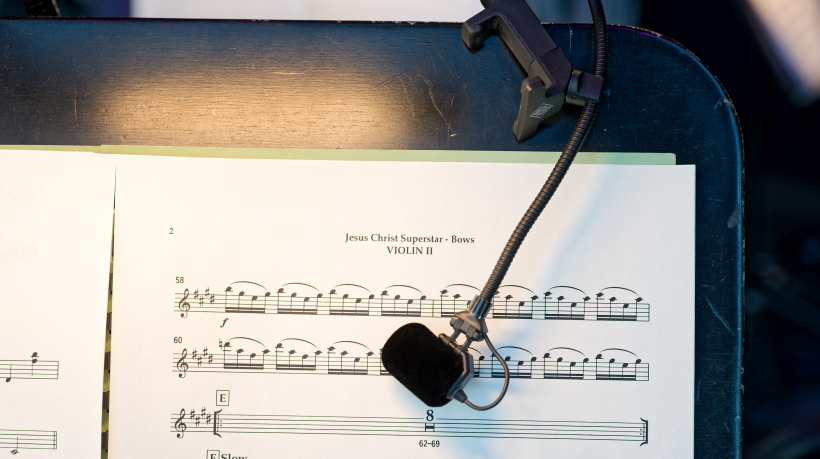
“You can definitely say that the Spectera wireless system is quicker to set up than a conventional wireless system,” said Schwark with satisfaction. “It’s extremely convenient when you can manage all the components in one central system and you no longer have to handle a lot of individual devices, for example to synchronize the bodypack transmitters and in-ear receivers.” Böttler added: “When you use Spectera for the first time, it initially requires some rethinking due to the system’s innovative approach, but the advantages are obvious.”
“Spectera is a scalable system, and when I was preparing the shows in Hangar 4, it soon became clear to me that the project couldn’t be implemented properly with a single Base Station,” said Schwark. “My aim was to keep the latency as low as possible while ensuring a stable wireless connection with a good range and still providing all performers with excellent sound quality. During the performances, we used the ‘Live’ audio link mode for the microphones and ‘Live Low Latency’ for the IEM channels. Both provide a balanced relationship between sound quality, range, latency and the consumption of energy and resources.”
This project commissioned by the Komische Oper Berlin in 2025 was the third time that Schwark had worked in a hangar at the former Tempelhof airport. “It was already decided last year that ‘Jesus Christ Superstar’ would be on the programme for 2025,” he said. “Detailed planning began at the start of this year. The contract to provide the sound equipment was awarded to Neumann & Müller GmbH & Co. KG. As usual, additional material was rented from external providers. For the new Sennheiser Spectera systems, this was FREAKSOUND GmbH. Currently, there are still only a few rental companies in Germany that can supply Spectera systems.” Before the performances in Hangar?4, Schwark had used Spectera for “The World of Hans Zimmer – An Immersive Symphony” in Oberhausen.
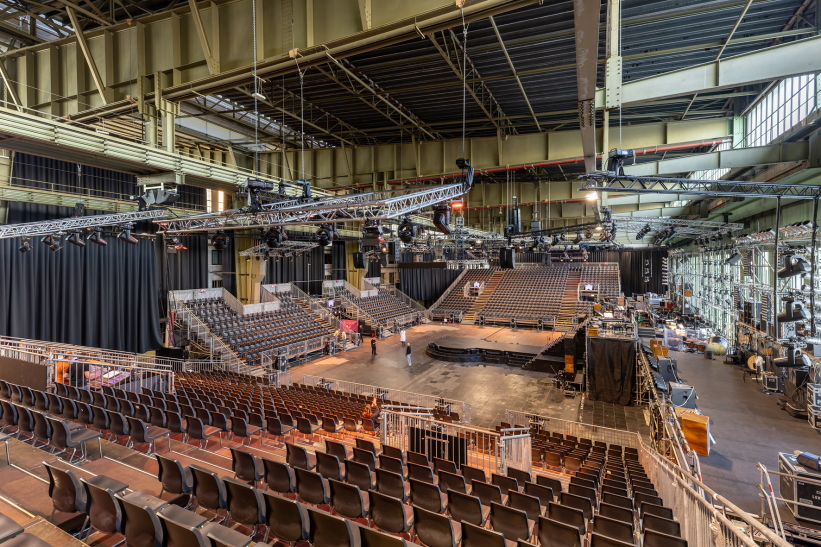
In order to configure the Sennheiser Spectera systems efficiently, Schwark used the brand-independent RF planning software ‘SoundBase Sennheiser Spectera Mode Planner’. In Hangar 4, Spectera WebUI was displayed on a screen in the wireless world, and the wireless specialists working there on behalf of Neumann & Müller confirmed its exceptional clarity.
The SEK bodypacks with their Sennheiser BA 70 lithium-ion battery packs can achieve an operating time of up to seven hours, which easily met the requirements of ‘Jesus Christ Superstar’. The battery packs were recharged in five L 6000 charging stations, before being pragmatically stored in a small cardboard box labelled “full” and available for the performance.
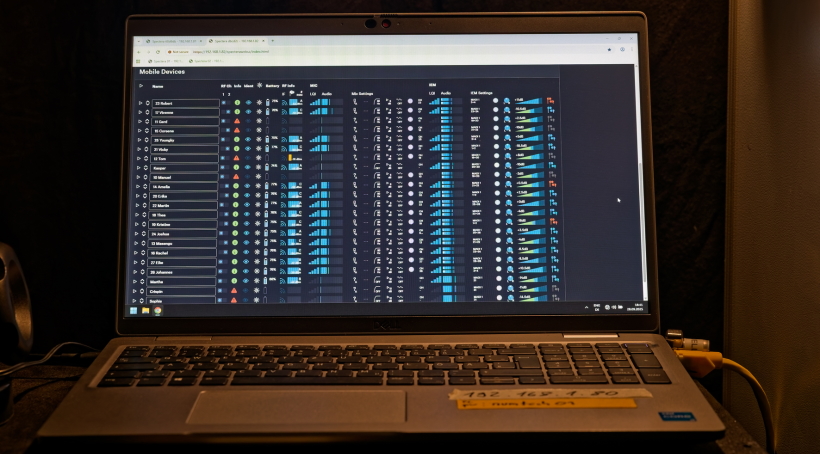
In Hangar?4, each of the two Spectera Base Stations used two 8?MHz wide TV channels in the UHF range, which corresponded to an overall bandwidth of 32?MHz (4 × 8MHz). The centre frequencies were 474, 490, 538 and 586MHz. The redundant power supplies of the Spectera Base Stations were connected both to a UPS and to the mains power supply. The compact 19” mainframes were integrated via MADI into the PA system, which was operated in a fibre optic ring with a word width of 24 bits and a sampling rate of 96 kHz.
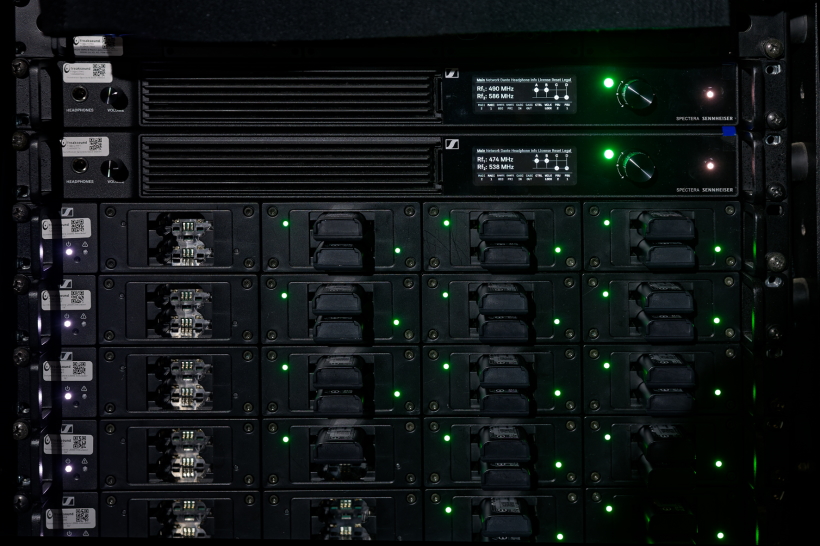
“Using Spectera is particularly worthwhile if you need a larger number of wireless channels,” said Schwark. “I’m sure that nobody would seriously consider using such a system for just two or three headmics. It wouldn’t make much sense from a cost perspective either. But for our setup in Hangar 4, Spectera is in fact more cost-effective than other systems with a comparable number of microphone and in-ear channels. We actually worked out the costs in detail for ‘Jesus Christ Superstar’.“
A total of eight Spectera DAD antennas were distributed throughout Hangar 4 in strategic positions and were connected to the two Spectera base stations using long Cat cables. Spectera does not require the use of conventional coaxial cables and eliminates the need for combiners, splitters and boosters. “Flexible Ethernet cables are a huge advantage especially when you have to route long cables high up below the ceiling into the rig,” said Böttler. “The wireless connections between the SEK bodypacks and the DAD antennas work reliably and the signal is not lost even when the performers move from the performance area into the canteen, which is separated by a door.” The Sennheiser DAD antennas serve both as receiving and transmitting antennas for IEM/IFB signals, mic/line signals and control data.
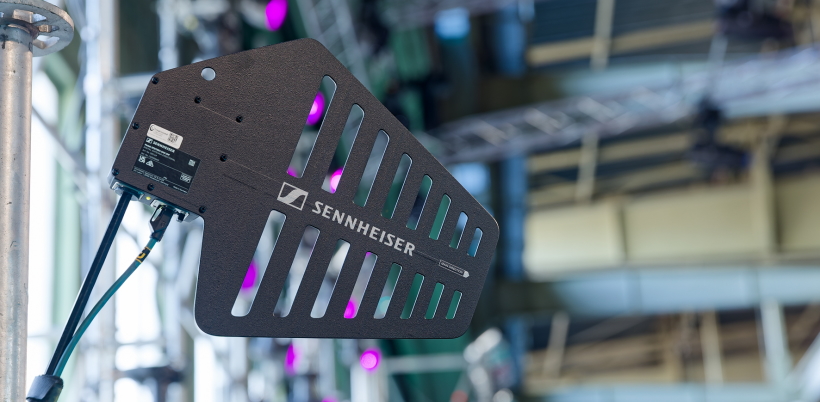
In addition to the sound crew from the Komische Oper Berlin, others involved in setting up Spectera included Stefan Ickert (Project Manager Neumann & Müller), and on behalf of Sennheiser, Per Witte, Business Development Manager, Volker Schmitt, Manager Technical Application Engineering, and Gerhard Spyra, Technical Application Engineer.
Kaspar Schwabe from Komische Oper Berlin operated the monitoring console for ‘Jesus Christ Superstar’. He had already worked at the former Tempelhof airport in Hans-Werner Henze’s ‘The Raft of the Medusa’ (2023) and Georg Friedrich Händel’s ‘Messiah’ (2024). “Using Spectera is a premiere for me”, the experienced audio professional explained. “About a year ago, I attended a Sennheiser presentation on the new WMAS technology, so I already knew quite a lot about the fundamentals in theory. The excellent initial impression that I had gained has now been confirmed in practice. The sound provided by Spectera is far better than with analogue in-ear channels, and the transmission of the microphone signals also works perfectly. For ‘Jesus Christ Superstar’, we didn’t even use the PCM mode, but used the data-reduced audio link modes ‘Live’ for the microphone signals and ‘Live Low Latency’ for the in-ear channels. ‘Live’ mode provides a clear, detailed sound that is comparable with other digital Sennheiser wireless systems – but when it comes to reception and range, the Spectera system sets completely new standards, especially in such a demanding environment as Hangar 4.”
Schwabe added: “Many performers are really pleased with the fact that they only need a single device for the microphone and monitoring during the shows. And as far as the sound is concerned, I’ve only received extremely positive feedback from several people involved – so it’s not only experts who notice the difference compared to analogue IEM transmission with a compander. However, some performers found the fact that the control button on the SEK bodypack does not have a fixed end position a little unusual at first. I showed them that the current sound level is displayed when they press the control button twice. Once they had been made aware of that, there were no more questions. And anyway, most of the performers don’t even touch their beltpack again once they are in costume. We defined a sensible limit for the maximum listening volume, which can’t be exceeded – the maximum playing volume for the SEK bodypacks is actually incredibly high. We set the minimum volume at a level that ensures that the sound always remains audible, so that nobody could get the impression that their beltpack is defective or deactivated.”
Schwabe summed up: “I think that this combination of a bodypack transmitter and an in-ear receiver in a single pack is definitely a groundbreaking solution for our application. As an additional feature for the monitoring console, I would also like to see a Cue Input function so that I can listen to all channels one after another at the touch of a button. At the moment, I make do with the Solo function in the console channels, but I would, of course, prefer to listen to the individual wireless channels directly on my SEK bodypack. From what I’ve heard so far, this will be resolved with an update, and I expect there will be some more very interesting new features for the Spectera wireless system in the future.”
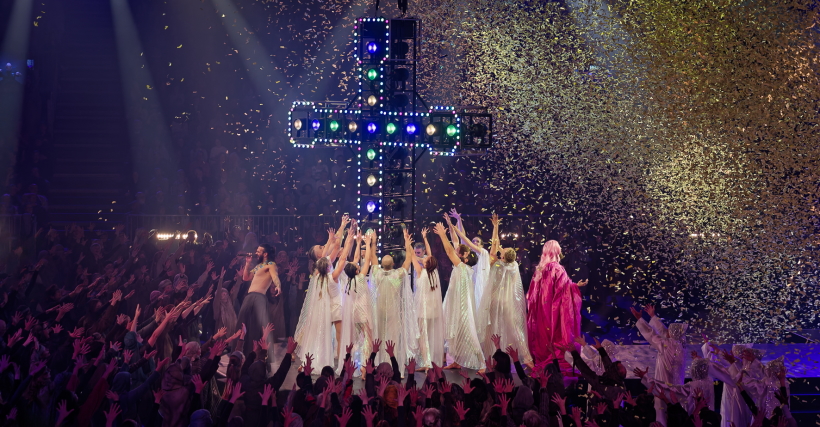
Schwark picked up this topic: “I’m also excited to see what new features Spectera will offer in the next few years. A future update could perhaps include a feature that lets the SEK bodypacks give an acoustic signal as soon as a predefined threshold value has been reached. That would certainly be helpful for some performers on a dark stage. I would also like to see an option where multiple Spectera Base Stations in one setup no longer operate as independent components separate from each other. The cascade ports for this are already there, but are not currently functional.”
When asked, finally, whether he had noticed anything particular about the new Sennheiser Spectera systems during ‘Jesus Christ Superstar’, Schwark replied: “I think what’s fantastic is that I really didn’t notice anything at all at the FOH console – Spectera worked perfectly and sounds excellent! Perhaps I can take a phrase often used by a Californian tech company and apply it to Spectera: It just works!”
 How to resolve AdBlock issue?
How to resolve AdBlock issue?